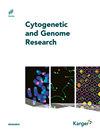lncRNA FOXD2-AS1下调通过miR-1913/SETD1A轴赋予胃癌细胞放射敏感性
IF 1.7
4区 生物学
Q4 CELL BIOLOGY
引用次数: 8
摘要
长链非编码RNA FOXD2相邻对链RNA1 (FOXD2- as1)在包括胃癌(GC)在内的多种癌症中起致瘤作用。然而,FOXD2-AS1在调节GC细胞辐射敏感性中的功能及其潜在的分子机制尚不清楚。本研究旨在探讨FOXD2-AS1调控GC细胞放射敏感性的潜在机制。RT-qPCR结果显示,暴露于辐射的GC细胞中FOXD2-AS1表达上调。亚细胞分离法定位GC细胞中的FOXD2-AS1。通过集落形成、MTT、EdU和流式细胞术研究FOXD2-AS1在调节细胞增殖、细胞周期进展和细胞凋亡中的作用。Western blotting检测细胞凋亡相关标记物和包含1A的SET结构域(SETD1A)的蛋白水平。采用同源重组报告基因法探讨FOXD2-AS1对DNA损伤修复的影响。FOXD2-AS1的下游分子通过RNA pull - down、荧光素酶报告基因和RNA免疫沉淀法进行鉴定。结果表明,FOXD2-AS1敲低抑制了胃癌细胞增殖和细胞周期进程,促进了胃癌细胞凋亡和放射敏感性。在GC细胞中,FOXD2-AS1可与miR-1913结合。此外,miR-1913靶向SETD1A,而SETD1A在GC细胞中高表达。SETD1A的过表达逆转了FOXD2-AS1沉默诱导的GC细胞增殖、凋亡和放射敏感性的影响。综上所述,敲低FOXD2-AS1可通过海绵作用miR-1913上调SETD1A表达来增强GC细胞的放射敏感性。本文章由计算机程序翻译,如有差异,请以英文原文为准。
Downregulation of lncRNA FOXD2-AS1 Confers Radiosensitivity to Gastric Cancer Cells via miR-1913/SETD1A Axis
Long noncoding RNA FOXD2 adjacent opposite strand RNA1 (FOXD2-AS1) plays an oncogenic role in various cancers, including gastric cancer (GC). However, the function of FOXD2-AS1 in regulating radiosensitivity of GC cells and its underlying molecular mechanisms have not been elucidated. This study aimed to figure out the potential mechanisms of FOXD2-AS1 in regulating GC cell radiosensitivity. RT-qPCR revealed upregulation of FOXD2-AS1 in GC cells exposed to radiation. Subcellular fractionation assay was used to localize FOXD2-AS1 in GC cells. Colony formation, MTT, EdU, and flow cytometry assays were performed to investigate the role of FOXD2-AS1 in regulating cell proliferation, cell cycle progression, and cell apoptosis. Western blotting was used to assess protein levels of apoptosis-associated markers and SET domain containing 1A (SETD1A). Homologous recombination reporter assay was conducted to explore the effect of FOXD2-AS1 on DNA damage repair. The downstream molecules of FOXD2-AS1 were identified with RNA pulldown, luciferase reporter, and RNA immunoprecipitation assays. The results showed that FOXD2-AS1 knockdown suppressed cell proliferation and cell cycle progression and promoted cell apoptosis and radiosensitivity of GC. FOXD2-AS1 could bind with miR-1913 in GC cells. In addition, miR-1913 targeted SETD1A, which was highly expressed in GC cells. Overexpression of SETD1A reversed FOXD2-AS1 silencing-induced effects on proliferation, apoptosis, and radiosensitivity of GC cells. In conclusion, knocking down FOXD2-AS1 enhances the radiosensitivity of GC cells by sponging miR-1913 to upregulate SETD1A expression.
求助全文
通过发布文献求助,成功后即可免费获取论文全文。
去求助
来源期刊

Cytogenetic and Genome Research
生物-细胞生物学
CiteScore
3.10
自引率
5.90%
发文量
25
审稿时长
1 months
期刊介绍:
During the last decades, ''Cytogenetic and Genome Research'' has been the leading forum for original reports and reviews in human and animal cytogenetics, including molecular, clinical and comparative cytogenetics. In recent years, most of its papers have centered on genome research, including gene cloning and sequencing, gene mapping, gene regulation and expression, cancer genetics, comparative genetics, gene linkage and related areas. The journal also publishes key papers on chromosome aberrations in somatic, meiotic and malignant cells. Its scope has expanded to include studies on invertebrate and plant cytogenetics and genomics. Also featured are the vast majority of the reports of the International Workshops on Human Chromosome Mapping, the reports of international human and animal chromosome nomenclature committees, and proceedings of the American and European cytogenetic conferences and other events. In addition to regular issues, the journal has been publishing since 2002 a series of topical issues on a broad variety of themes from cytogenetic and genome research.
 求助内容:
求助内容: 应助结果提醒方式:
应助结果提醒方式:


